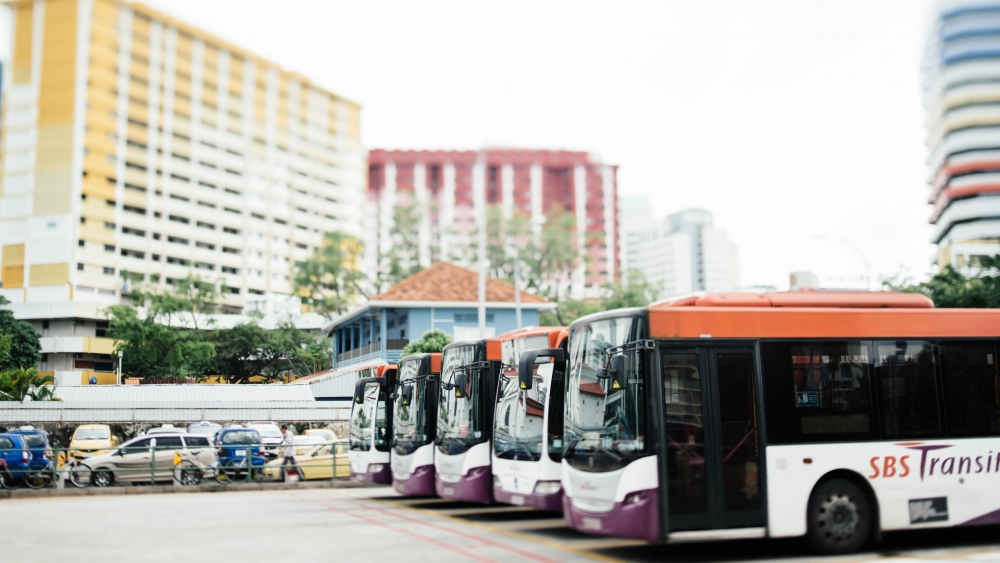You have an ad on a bus – congratulations, that’s great stuff.
How much did it cost? More than $30,000 for three months? And that’s one bus only? Right.
Your brand awareness must be spiking. Oh, you’re not sure?
You must be getting some leads, though?
…
While I am sure your CEO is happy to see the brand flash past, it can be hard to tell whether your bus ad has actually made an impact. Bus ad starter-packages of around $30,000 is a big sum for small and midsize companies to spend, so you really need to consider how effective bus ads they actually are for your intended outcome, and what you could potentially do with that money instead.
What does an ad on a bus do for you?
Many marketing departments (not all, though) are afraid to invest their budgets in testing new ways of reaching their target audiences. They are more comfortable with tried-and-tested campaigns that have worked for them in the past rather than branch out into new territories they are uncertain about paying off.
Now, we aren’t slamming transit ads altogether — they’re hugely effective for certain campaigns and brands. In fact, out-of-home advertising is the only offline media category to grow consistently, thanks in part to huge commuter volumes. Our contention is with brands taking a cookie-cutter approach, given the main argument for running ads on buses in Singapore is that it will generate mass awareness for your brand.
But does it? Sure, you can get in front of people by riding around Singapore — but how impactful is it?
Here’s what you CAN know about your bus ads: What percentage of people from your target audience takes the bus (in general) and how often; which routes are more likely to be seen by a particular audience (i.e. students, tourists, office workers); and an estimation of how many people could potentially see the bus your ad is on.
But here’s what you CAN’T know about them: Your brand awareness lift as a result of your bus ad; how many people looked at your website or social pages after seeing the bus ad; how many people bought your products or requested your services as a result; cost per conversion and return on investment (ROI) or return on ad spend (ROAS).
For large, established brands, these concerns are minimal. But for small and mid-sized businesses looking to reach a wide audience, to generate mass brand awareness and to track their efforts accordingly, it should be an important consideration.
So what should you do with $30,000 (if you don’t paste it on a bus)?
A quick bus ride would reveal that most people look at their phones both while commuting or at bus stops. While your ads will get in front of a lot of people, it’s hard to say whether there will be an impact on sales. Following the motto ‘a lot helps a lot’ is suitable here – i.e. the more buses carry your ad, the higher the chance your message will be heard. However, this comes at a significant cost. So, why not try to reach people where they are more responsive and can take immediate action?
Example: Let’s assume you are running a big-ticket event in Singapore for which you want to drive awareness and sell about 10,000 tickets at $70 each.
Alternative #1 – Digital Reach
Opt for a digital advertising campaign that includes brand awareness and lead generation in the same campaign. Start by running video ads on social media or other digital channels. For a budget of $5,000, your ad can reach more 500,000 people in your target audiences.
Your next campaign can be built and optimised based on the results and data you have accumulated so far. If you run another bus ad campaign, you are starting from scratch because there is no data.
Alternative #2 – Digital retargeting
Run a campaign retargeting people who have liked, interacted or fully watched your brand video. Choose ‘conversion’ (online sales) as your campaign objective to reach people who are more likely to make a purchase.
Find more people who are similar to those that have already bought a ticket. Create a custom audience based on the conversions in phase two, and then create a lookalike audience. This will find people who are very similar to those who made a purchase and who are more likely to purchase as well.
Alternative #3 – PR
Define your story angles and pitch your event to lifestyle publications and general media. Typically, after impactful event coverage appears, you will be able to register a spike in ticket sales. Using e-ticketing service for your event, you can keep track of how effective the different media coverage is.
Alternative #4 – Influencer campaign
No matter what target audience your event may have, there will be a number of great influencers. Be sure to work closely with your PR team in selecting the right influencers and outlining the rules of the engagement. Just a simple post that talks about your event might not be enough. Links back to your website and ticket giveaways should be a given. Be innovative and use the influencers’ channels in a creative manner.
What’s the outcome?
If we’re talking about bang for your buck and tangible outcomes – regardless of whether you want to sell tickets, drive awareness for your ecommerce store, or generate leads for your business – a digital campaign will get you quantifiable results for your investment.
And while this is a debatable topic and you might argue that out-of-home advertising is creative and ‘in your face’, until you can show us the data to prove your point…
Took the wrong route? It’s time to step off. If you want to talk about how you could spend your marketing budget more efficiently, send us a message to hello@mutant.com.sg.

